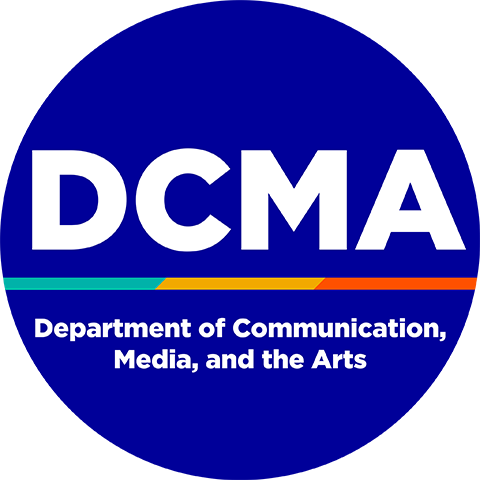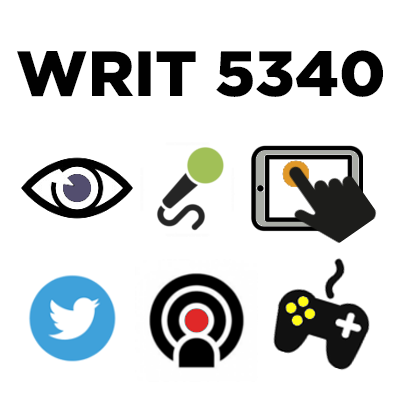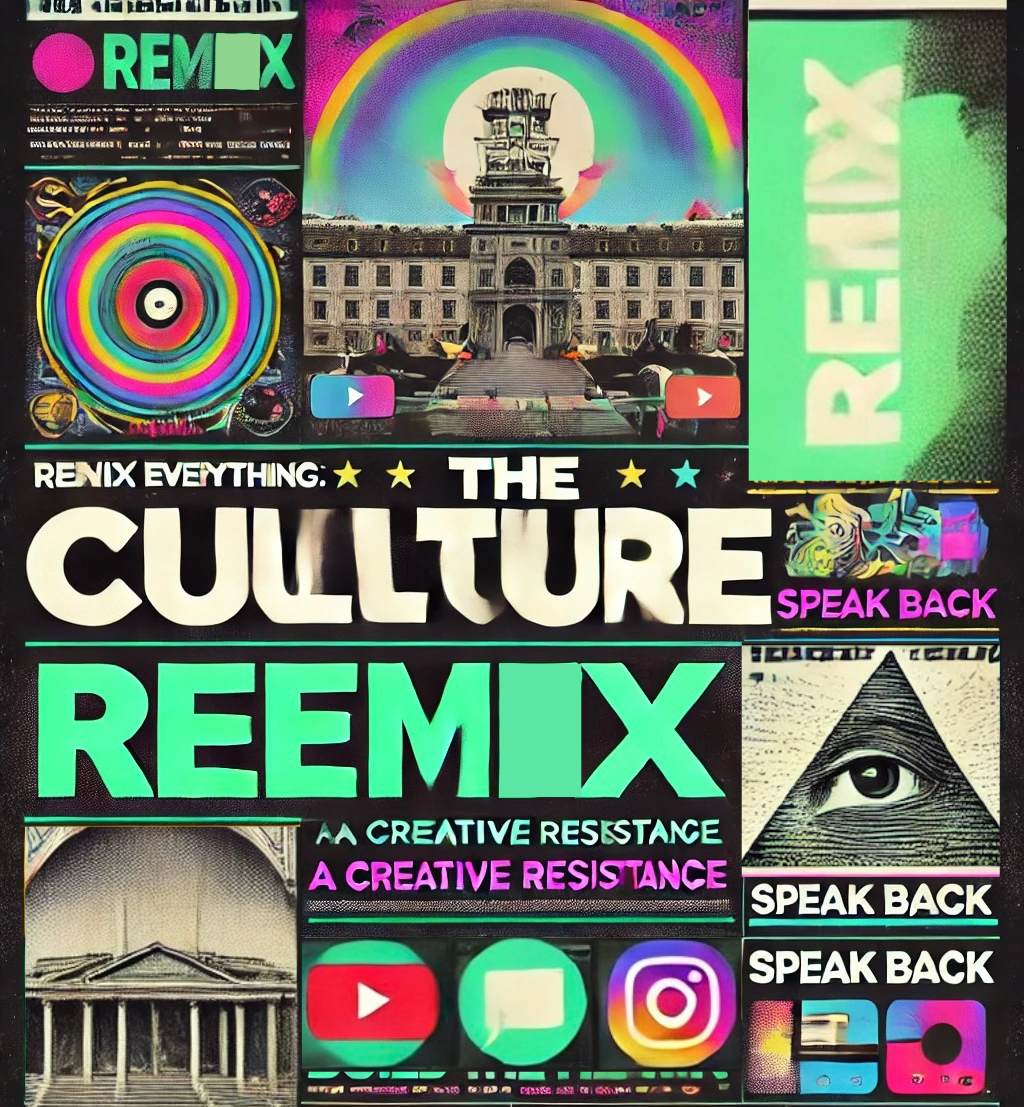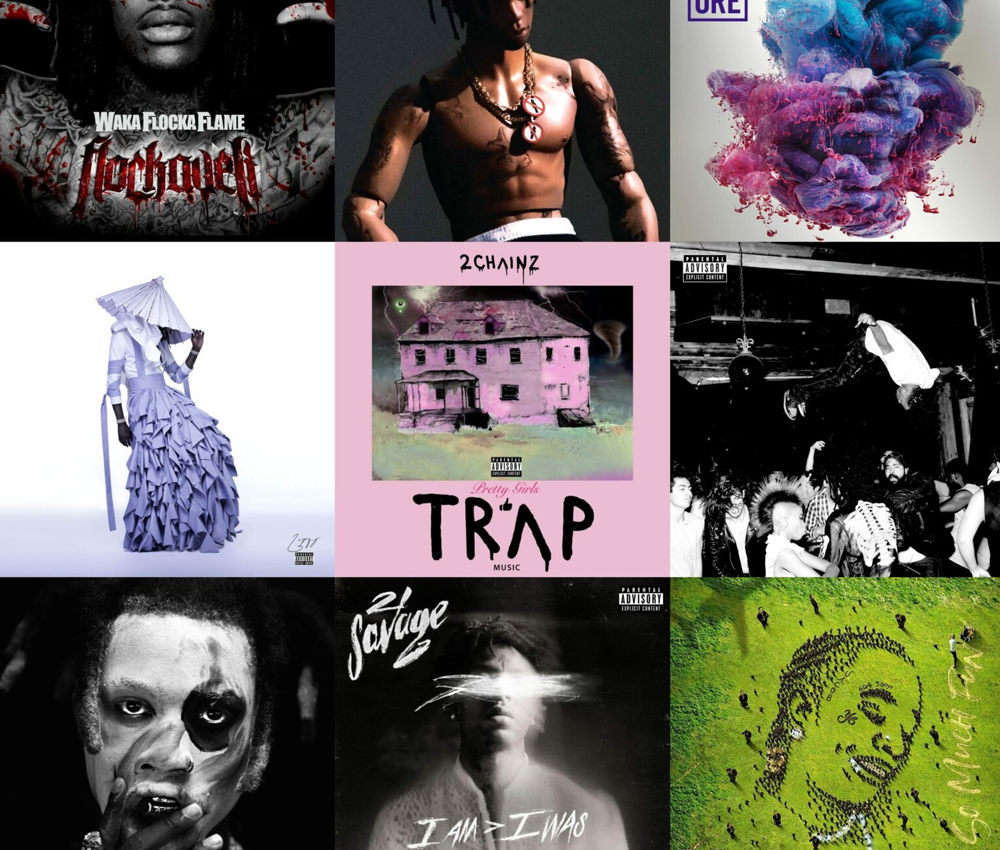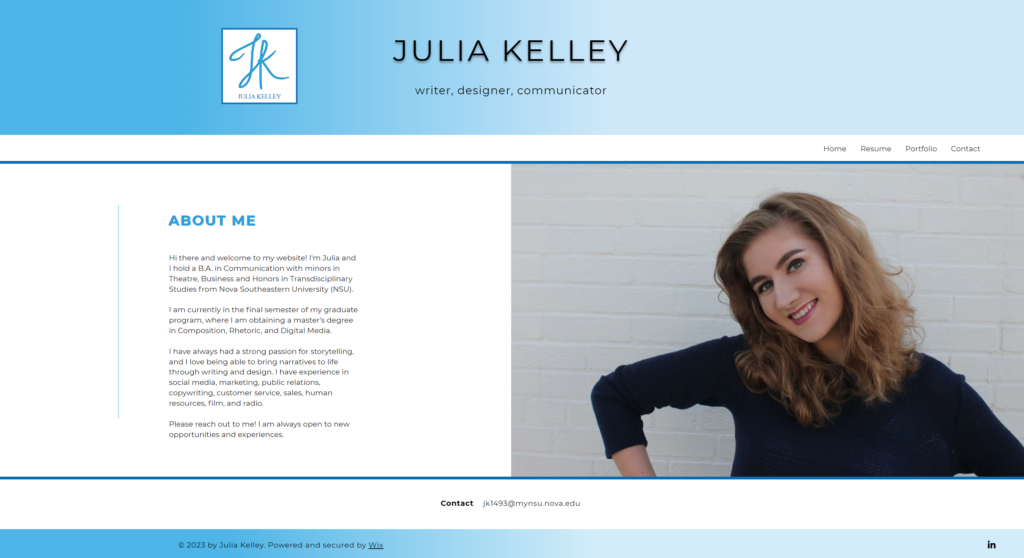

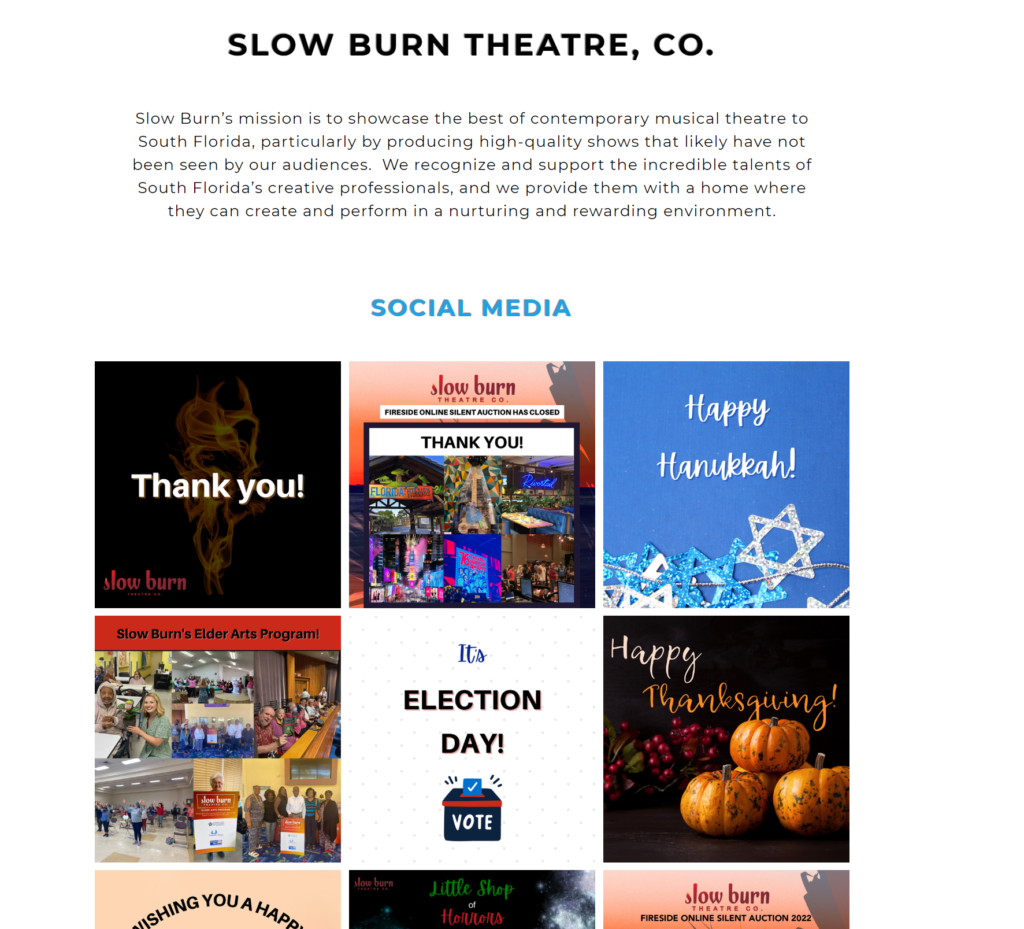
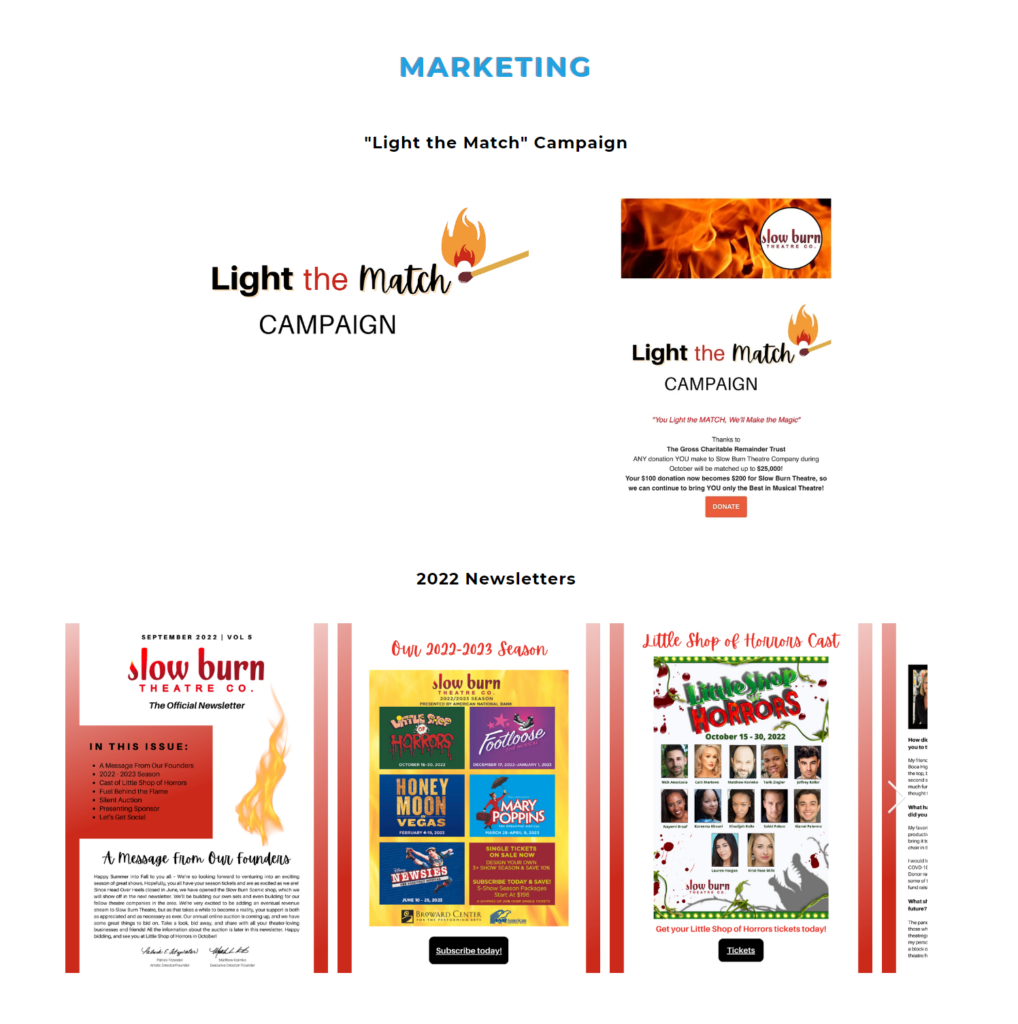
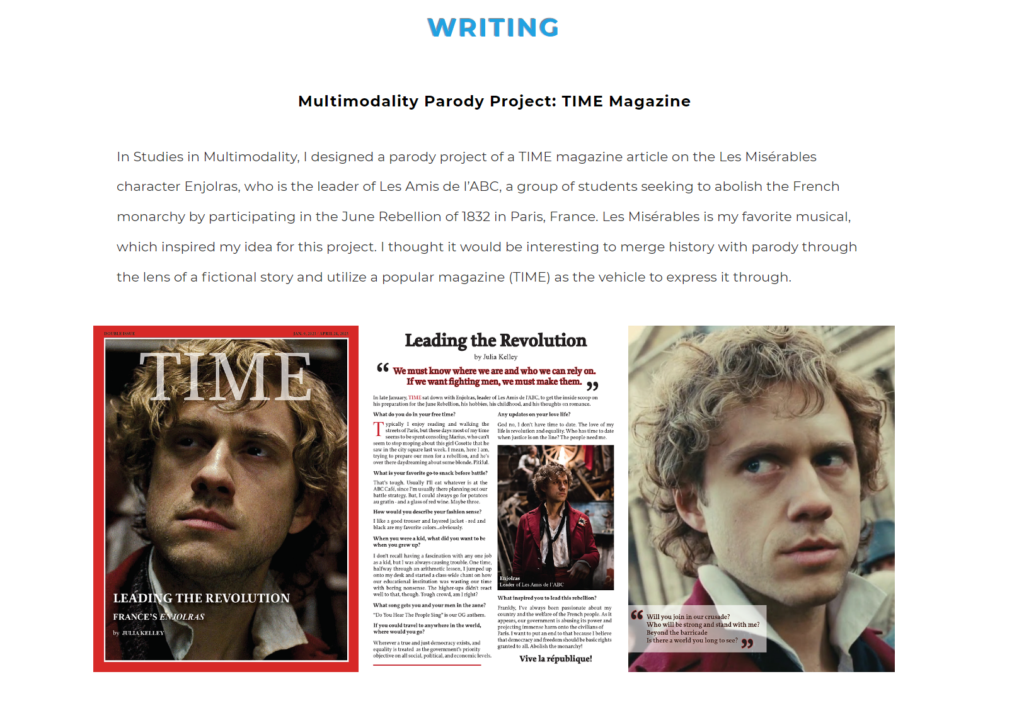
Link to professional online portfolio: https://juliakelley9.wixsite.com/crdm2023
- Maker: Julia Kelley
- Genre: Website Portfolio
- Level: Graduate
- Program: Composition, Rhetoric, and Digital Media
- Course: WRIT 5340: Studies in Multimodality and Digital Media
- Instructor: Dr. Eric Mason
- Semester Created: Winter 2023
Description
For the purposes of the going pro project, I chose to create an online website portfolio that houses all of the work from the first thesis related internship I completed, as well as other work that I have created in my courses over the last two years in the CRDM program. Because I am pursuing the internship option for my thesis completion project, I thought that beginning the process of developing the portfolio would allow me to reflect on the work that I have done and the skills that I have attained through my professional experiences. As part of my thesis, I will need to create an online portfolio that will be submitted to the program in August, and the learning objectives of this assignment inspired me to begin envisioning what my portfolio could look like and how it could properly communicate my personality and voice. I chose to use Wix as the website-building platform because it is user-friendly, versatile, and diverse in its features. I began the process of creating the portfolio by conceptualizing what pages I wanted it to have (as well as what pages I felt were necessary), and I ultimately decided to separate my website into four main sections: “Home,” “Resume,” “Portfolio,” and “Contact.” I then gathered all of the deliverables produced from my first internship, as well as select pieces of work from past courses, and spent time organizing and assembling the digital materials until it looked the way I wanted it to and conveyed the desired tone.
Reflection
In reflecting on the process of producing the going pro project, considerable time went into determining what my brand should look like and how it should be visually represented through the portfolio itself. My design thinking process considerably affected how I approached this project in that I had to think critically about what my personal brand identity is and how it could be effectively translated into a digital, web-based medium. Karl Stolley’s The lo-fi manifesto introduces the term “lo-fi” and describes how it can be useful for producing digital work that is both accessible and long-lasting (Stolley, n.d.). Stolley also alludes to the importance of individual agency in production and creation, rather than passive utilization (Stolley, n.d.). This text in particular assisted me in thinking about different aspects of production, such as determining what features I wanted to add, how I could manipulate these features, questioning the standard conventions and expectations of the technology (the structure of a website), and working through confirming that my portfolio adhered to these conventions appropriately. Even more, Stolley’s work helped me reflect on why I was making certain design decisions and pushed me to take a step back to ensure that my choices were rhetorically situated and not passively selected. Additionally, in Between modes: Assessing student new media compositions, Madeleine Sorapure contends that educators should approach assessing students’ multimodal compositions not by examining each individual mode separately, but by how the modes intersect (Sorapure, n.d.), and this informed how I constructed my online portfolio, as there were several modes that I was utilizing, such as text, images, and videos. I wanted them all to contribute to telling the same narrative. This project is valuable for the field because it demonstrates how we can leverage emerging technologies, as well as showcases how digital technologies have afforded us new, transformative ways to communicate and connect with others.
Sources:
Sorapure, M. (n.d.). Between modes: Assessing student new media compositions. Kairos. https://kairos.technorhetoric.net/10.2/coverweb/sorapure/index.html
Stolley, K. (n.d.). The lo-fi manifesto. Kairos. https://kairos.technorhetoric.net/20.2/inventio/stolley/index.html
